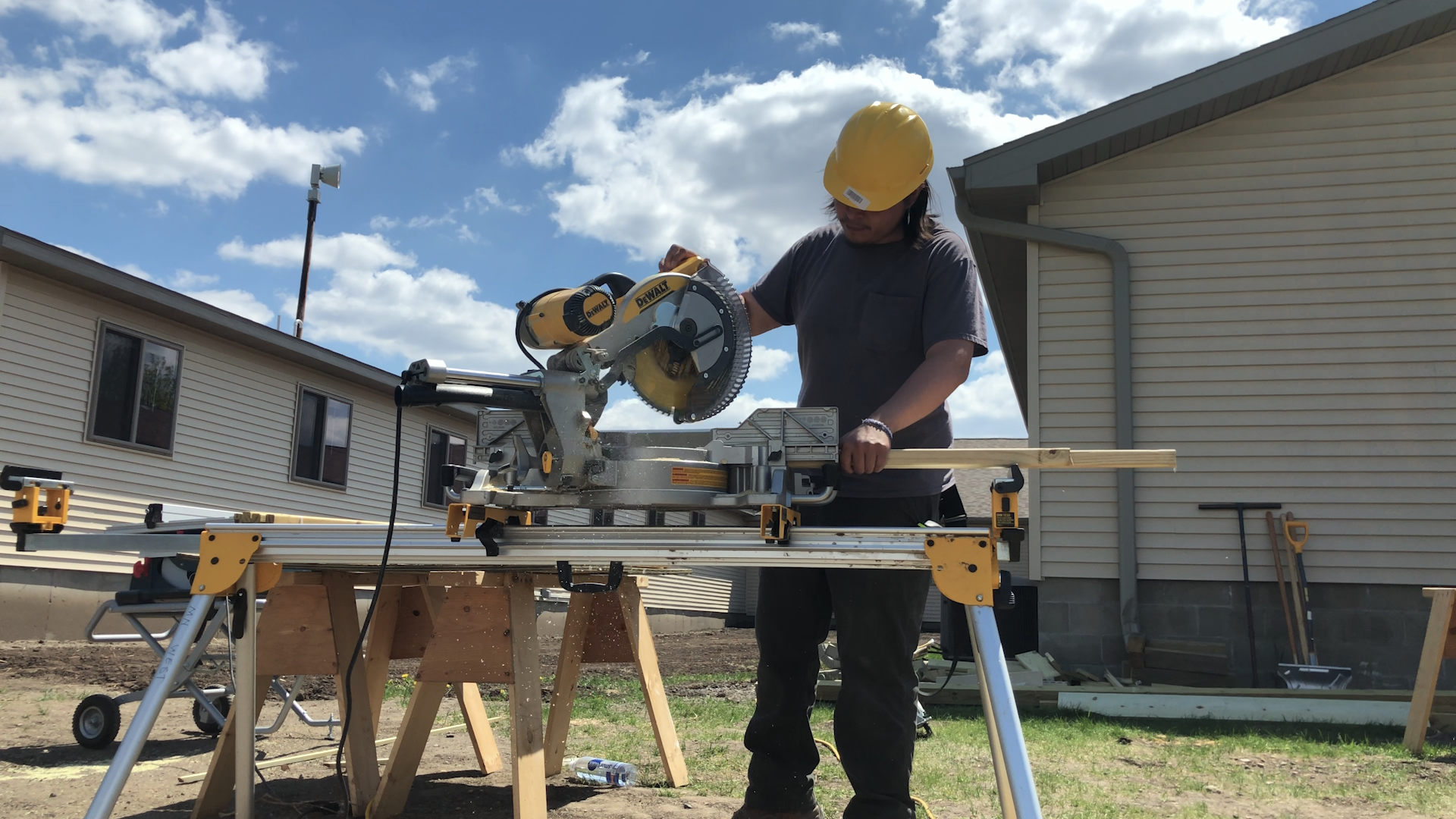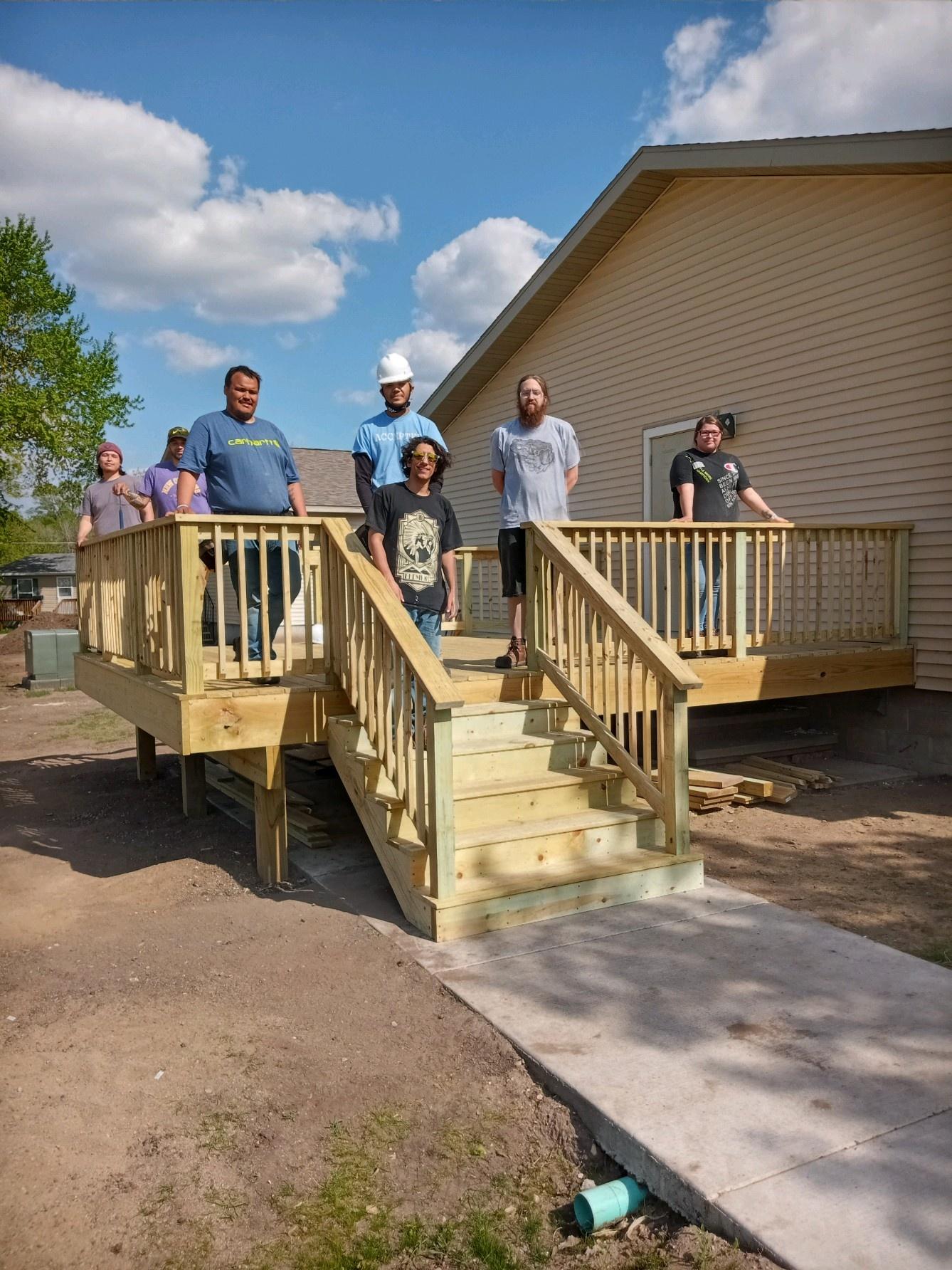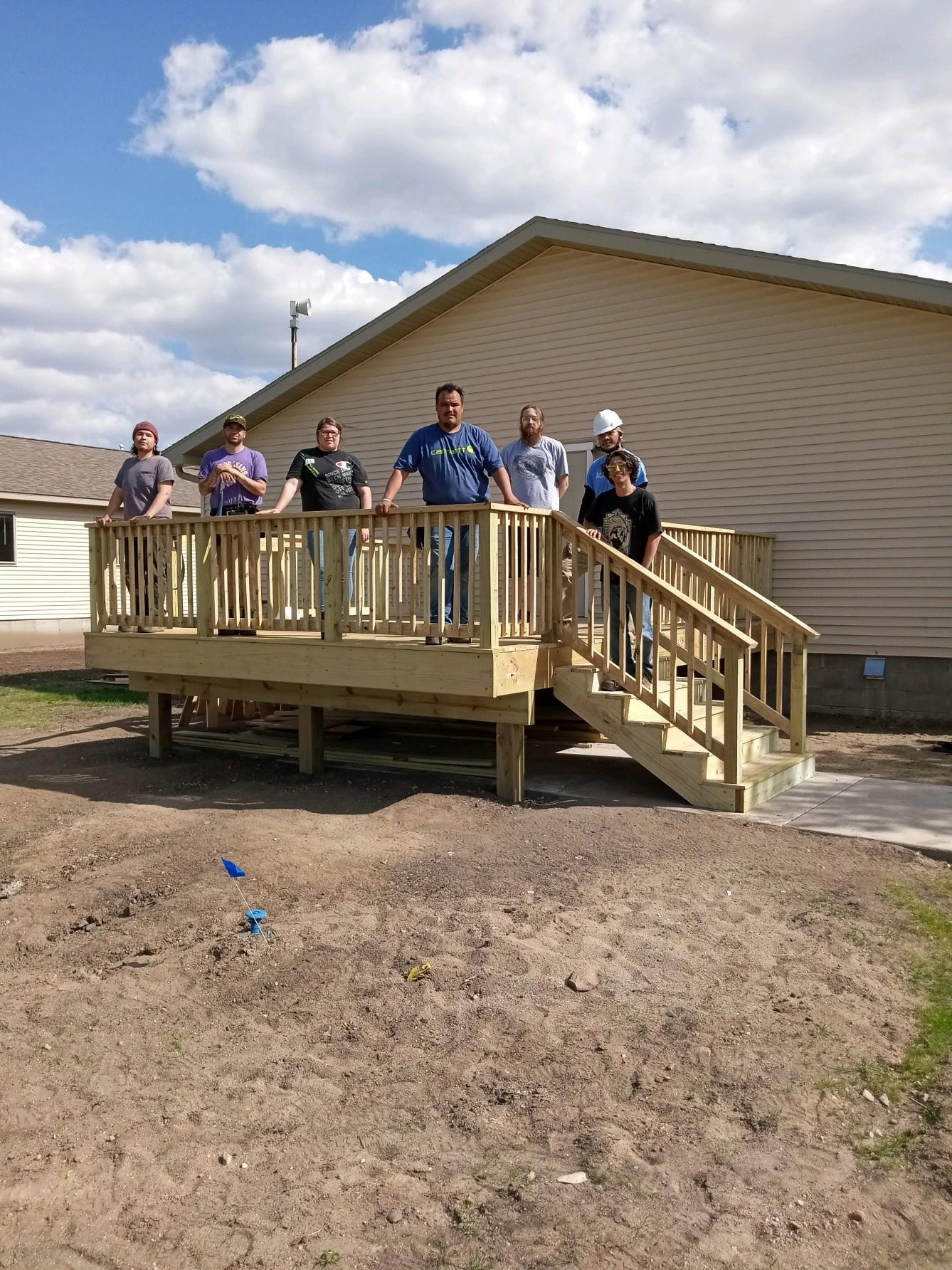The decks are located behind the government center. This is Piotter's first time teaching, but after completing the two year carpentry program at Ridgewater College in Willmar, he's been a foreman and worked in the field for 15 years. He said the in the mornings the class will do classroom work before heading out to work on labs project in the afternoons.
"I really like working with my hands so building the shed and wall framing has been my favorite so far," said Jacob Zimmer-Koerner, a student in the Cankuya Construction Trades program. "It's really cool to see a pile of lumber turn into something."
Piotter said that learning construction takes a lot of trail and error. "You can't just talk about things and expect them to show up and be able to do the job right. You kind of need the experience. You need the hands-on, you need to do it once, learn how to do it correctly. And along with that comes with mistakes and you kind of need to make mistakes, to learn."
When the class started in October of 2020, there were 13 students. Eight students completed the course and received their certificates on June 23. Of those eight, two are young women.
"There was as more women in the class before, when it first started. But that was definitely one of the reasons that I did want to take it because you don't see very women in trades, specifically carpentry," said Betty Hernandez, a students in the Cankuya Construction Trades program. "... We had like a little job interview panel ... this morning and I asked about women in trades and one of the companies said that 98% of his workers are male. And he said, most of the women that do work with his company are secretaries. Like they're not actually out on the job or anything like that. So that is a big motivator to me."
Funding for this program came through a grant from the Minnesota Department of Employment and Economic Development, received by the Southwest Minnesota Private Industry Council. Eriann Faris is a youth program manager at Southwest Minnesota PIC. "The private industry council has been doing career pathway training for adults and youth for over a decade," she said. "So I felt strongly that we would be able to bring together kind of a construction pathway programming for some of the members at Lower Sioux."
She said that this type collaboration is the model that she's used in her 15 year career with PIC in Southwest Minnesota. "You learn real quick, I think, especially in southwest Minnesota, or more rural areas, that you can't do it alone because ... we all have so many things that we can bring to the table and leverage."
Faris said that PICs career pathway programs tend to be geared towards non-traditional students: outschool youth, immigrant and refugee populations, and because of this, there's often a wraparound support piece. To provide true support, Faris said that everything that goes into it has to be student and community centered. Every morning the Cankuya construction trades class would spend about an hour in Jackpot Junction Casino for class time. During one of their classes, PIC taught the students employability skills and about crafting self-promoting elevator pitches.
"It's interesting because these elevator speeches, that we've learned that they're not a self promoting culture." She said she learned the students mindset was more about helping the community rather than going to work for themselves. "And we wanted to be sensitive to that, and we didn't want to push it, like this is what you have to do or how it has to be done, but yet at the same time, just knowing that it is kind of the norm, as far as getting a job outside of the community.
Faris said that another thing she's learned thourghout her careers is that the the student has to come first and you have to identify what their needs are. "So I don't think any model we've done over the last 13 years has looked the same because the people in it aren't the same," she said.
For this particular collaboration, the needs identified by the community were to create community-based employees for community-based employers.
"There's a community need for employment. There's a need for a skilled people or skilled workers in those trades. And there is also a need for us to have our own local businesses where our money is being outsourced outside of the community," said Kodet. "We want to have our own plumbers and carpenters and everything like that. So the funding stays in the community."
In fact, the next class will be plumbing. Minnesota West will be offering a plumbing certificate to students at the Lower Sioux starting in summer of 2021. Minnesota West is also working through the logistics of making the Lower Sioux a Minnesota West site, because when classes are offered at one location for more than two semesters in a row, that location must be an officially designated Minnesota West site. So the college doesn't lose its educational accreditation.
"This is very important for us with the idea that we don't want to just come in and do some quick training and be out with this one," said Lanoue. "Our commitment is stronger here and so with the colleges saying that they were interested in making the Lower Sioux community as a site, it's demonstrated a longer term commitment and that we want to build a relationship with the community.
So much like the intricacies of a construction project, measure twice, cut once, use the right tool for the job, the same applied to getting this program established. Community listening, data gathering, and getting the right people in the right position. Congratulations. Pilot program, construction and trades, Cankuya.





